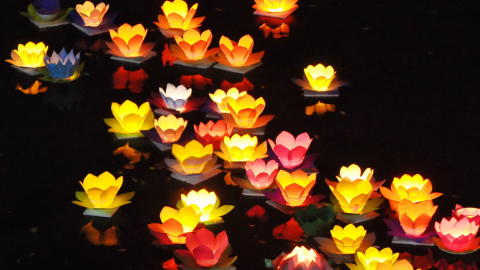Nghia An Assembly Hall, also known as Ong Pagoda, is one of the architectural and religious symbols of the Chaozhou Chinese in Saigon. Arriving here, photographer Nguyen Minh Duc had impressive impressions of this relic.
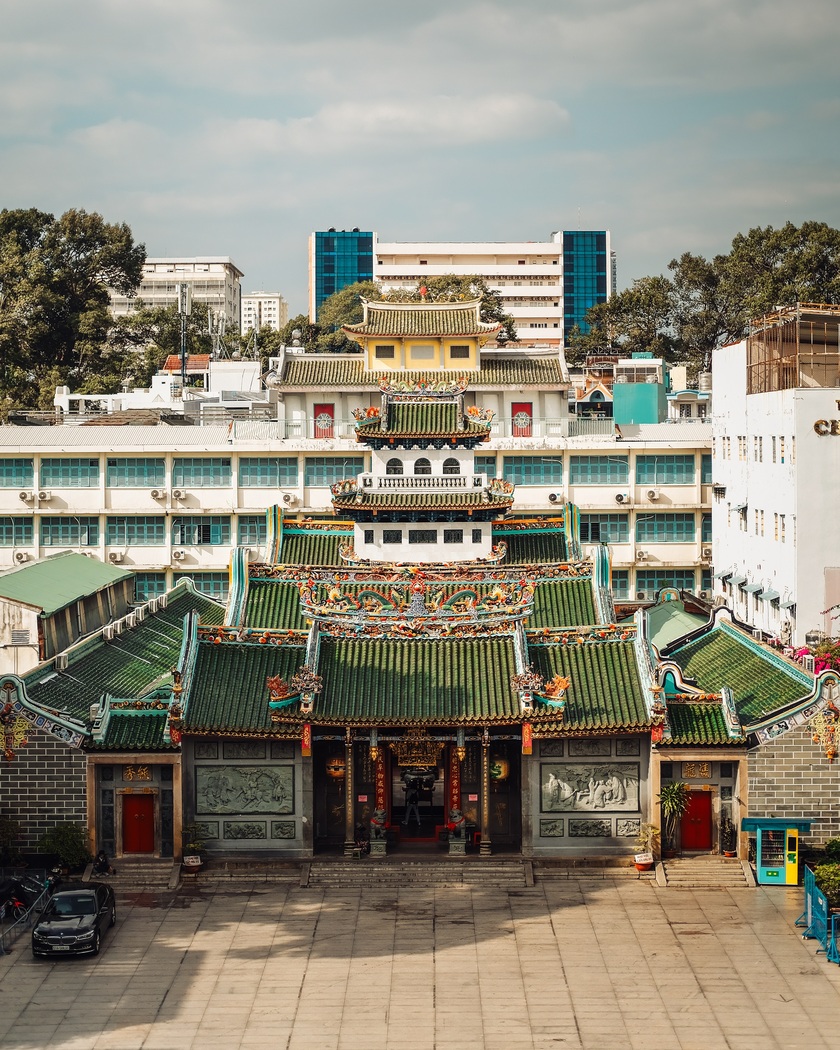
Panoramic view of Nghia An Assembly Hall - One of the oldest Chinese assembly halls in Saigon, bearing the mark of traditional architecture
Sophisticated architecture - pinnacle of artistic value
From the first moment he entered Nghia An Assembly Hall, Nguyen Minh Duc could not hide his admiration for the architectural beauty of the building. "All the carvings are extremely elaborate, sophisticated and delicate. What is special is that this place has been very well preserved and restored, making every detail almost intact over time," he shared.
What makes the Assembly Hall different from many other relics in Ho Chi Minh City is its cultural and religious features imbued with Chinese culture. This is not only a place to worship Quan Cong - a historical figure with a symbol of loyalty, but also a place where the quintessence of Chinese art through the centuries converges. Every detail from the horizontal lacquered boards, parallel sentences, glazed tile roofs to the pairs of stone unicorn statues exudes solemnity and a distinctive architectural style.




Unique pattern details reflect the spirit of traditional Chinese art
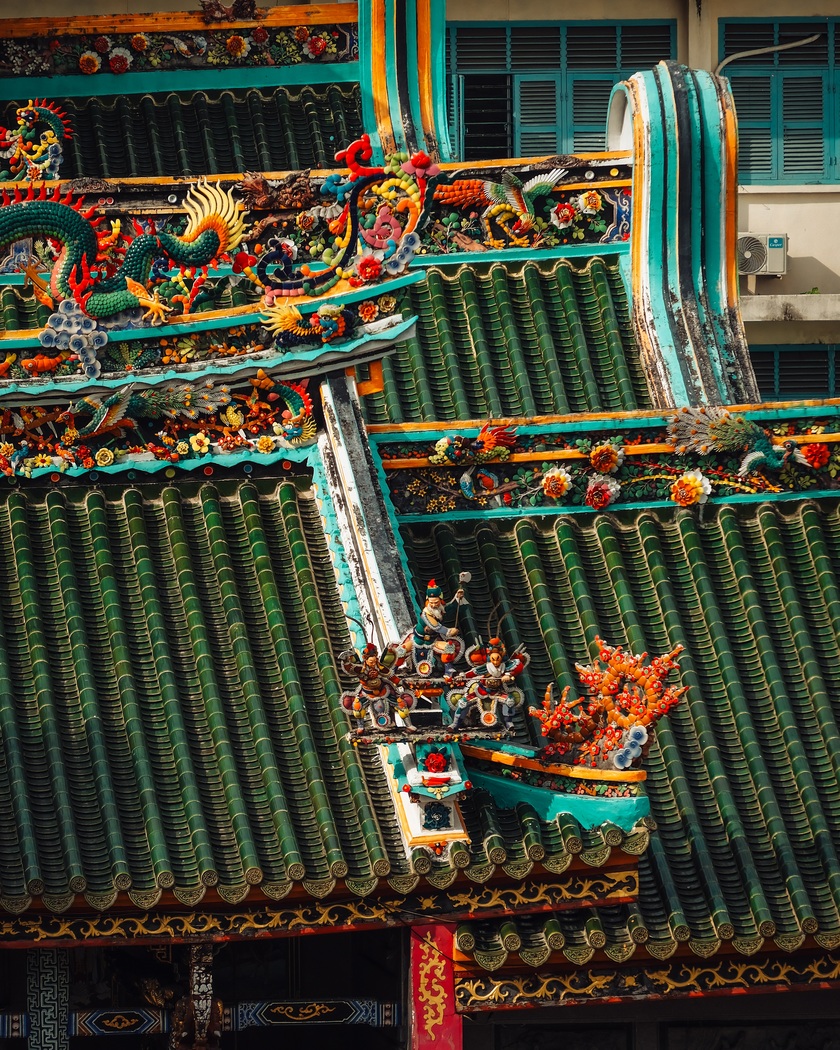
This is not only a place to worship Quan Cong - a historical figure symbolizing loyalty, but also a place where the quintessence of Chinese art through the centuries converges.
Preserving Chinese culture and spirituality in Saigon
Nghia An Assembly Hall is not simply an architectural work, but also plays an important role in the cultural and spiritual life of the Chinese community in Ho Chi Minh City. With the rituals of worshiping Quan Cong, the Nghinh Ong ceremony, the custom of borrowing Ong’s fortune at the beginning of the year… this place is not only a religious destination but also a symbol connecting tradition with today’s generation.
"I have many Chinese friends in Saigon, and they always mention Nghia An Assembly Hall as an indispensable part of their spiritual life. This is not only a place to preserve traditional rituals but also a unique work of art, where there is a delicate combination of wood carvings, calligraphy, ceramic pieces, reliefs... all creating a unique architecture that preserves the cultural and spiritual beauty of the Chinese of Chaozhou origin in Saigon", Nguyen Minh Duc shared.
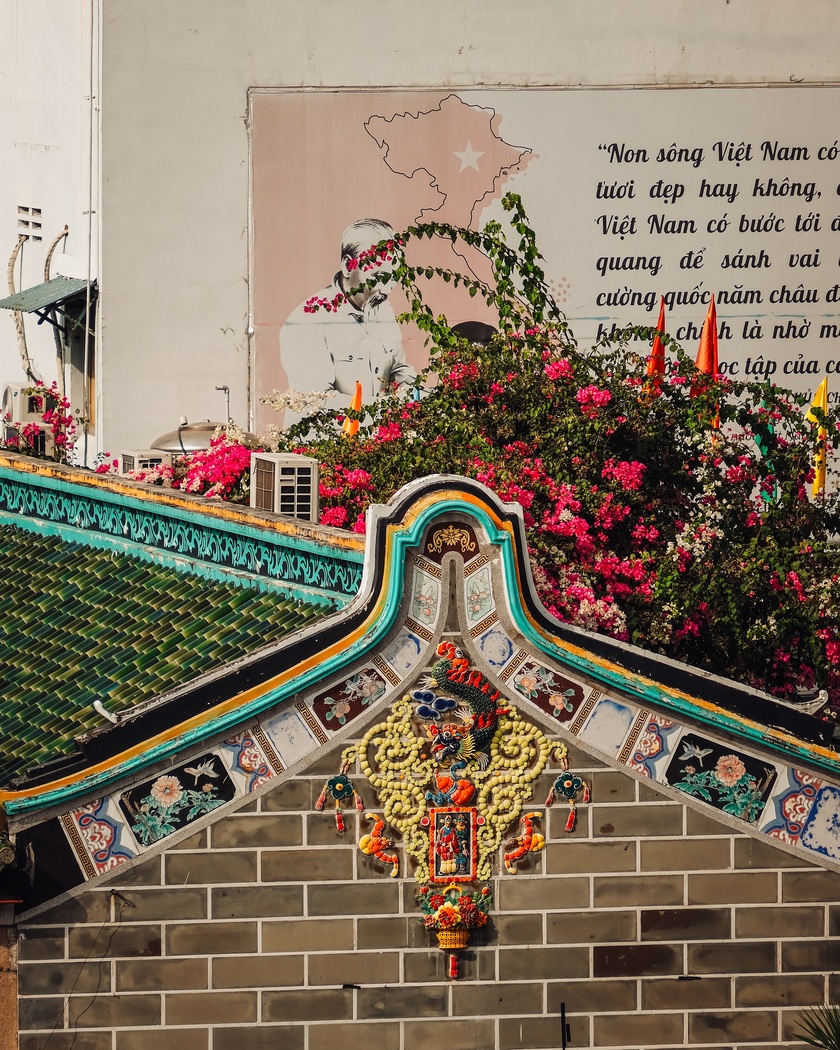


On top is a ceramic statue of "Two dragons fighting for a pearl"
Unique features in every architectural line
For a person who loves beauty and has a delicate artistic eye like Nguyen Minh Duc, every detail at Hoi Quan Nghia is a work of art worth admiring. "The architecture is the first thing that attracted me when I learned about Hoi Quan Nghia An, so that's what I really like here. The decorative wood carvings on the door frames of the pagoda left a lasting impression on me. Each detail has its own meaning, carved in great detail and with great precision, gilded with gold, thanks to which I can feel the majesty and respect of the work. Moreover, seeing the high level of skill of the artisans of the past is amazing," he shared.
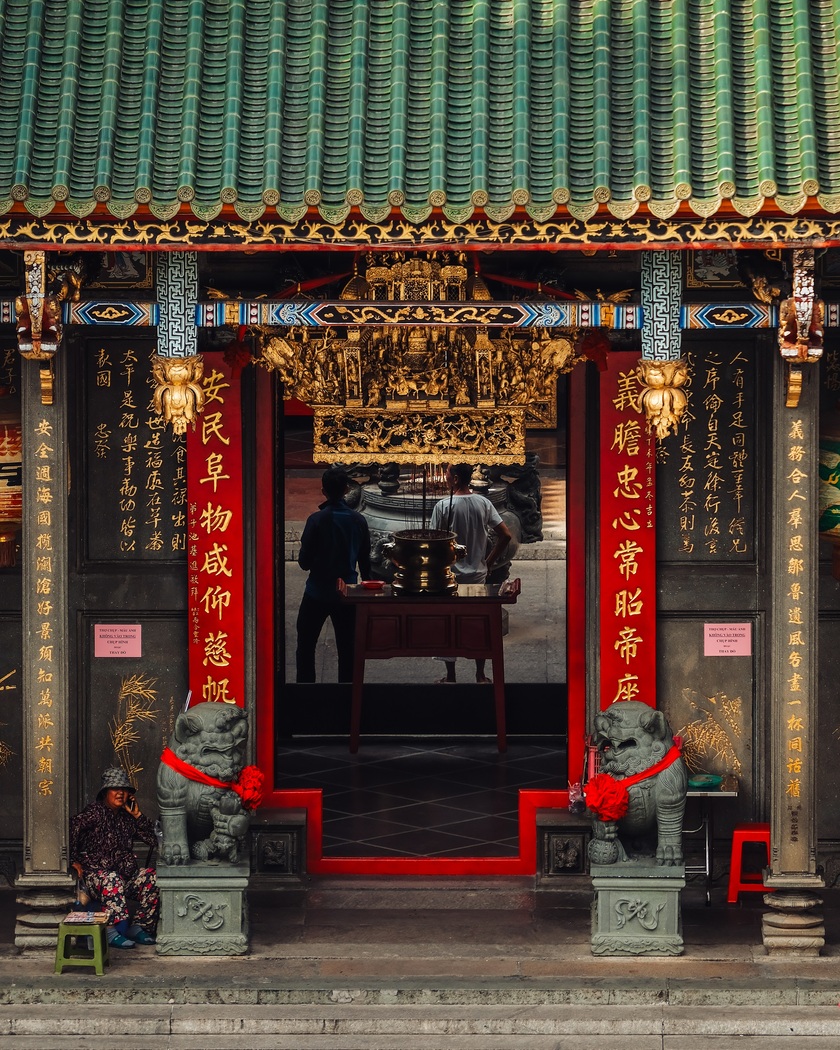
The majestic gate with elaborate carvings and parallel sentences shows the typical style of the Chaozhou Chinese people.
Not only the carvings, the glazed tile roofs and parallel sentences in the Assembly Hall also remind us of images from ancient Chinese films. The colors, the layout of the space, the arrangement of the worship items… all blend together to create an architectural picture with a strong Asian character, captivating anyone who loves Chinese culture.
Unique features in the heart of a colorful city
Unlike many other religious buildings in Vietnam, Nghia An Assembly Hall retains the original identity of traditional Chinese architecture. "Here, there is no mixing of styles, no change over time, but still retains the characteristics of the Chinese people of Chaozhou. This creates a very unique value for the Assembly Hall in a multicultural city like Saigon," commented Nguyen Minh Duc.

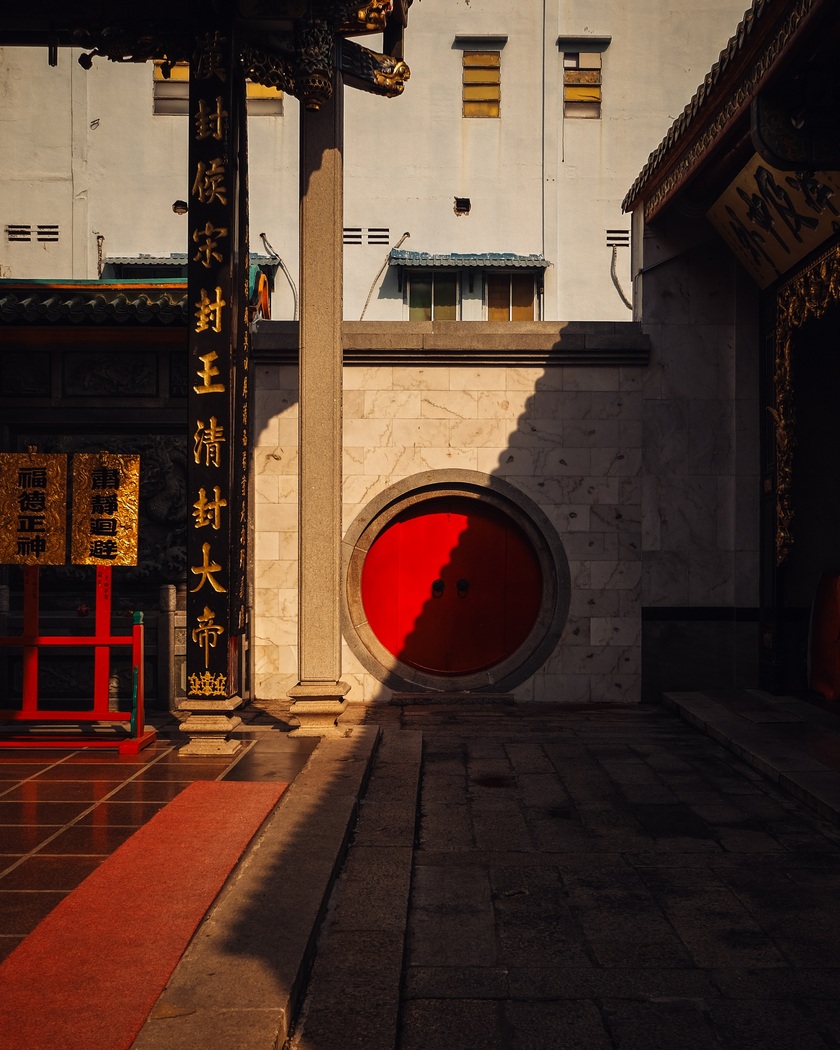
Amidst the hustle and bustle of Saigon, this place still retains its tranquility, bringing a sense of peace to visitors and worshippers.
Thanks to the serious care and preservation, Nghia An Assembly Hall still exists as a unique cultural mark, contributing to enriching the heritage map of the city. Passing through the ancient gates, people seem to be lost in a space imbued with history, where each brick and each pillar tells the stories of previous generations.
Nghia An Assembly Hall is not only a tourist destination, but also a place to feel and understand more about the traditional cultural values of the Chinese community in Saigon - people who have contributed significantly to the development of this city through many generations. A living heritage, a symbol of the spirit of preserving cultural identity, Nghia An Assembly Hall is a worthy stop for those who love to explore and appreciate long-standing cultural values.






























